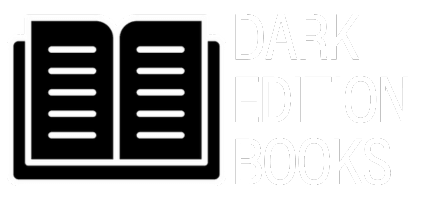
Hardcover or Paperback: Which Format Works Best for Books in Dark Mode?
Share
When you're ordering a Dark Edition Book, you'll choose between hardcover and paperback. Both feature the same black pages and white text—the difference is how the book is bound and covered.
Here's what actually matters when making this choice.
Hardcover: Built to Last
Our hardcovers use rigid boards wrapped in printed cover material, with a sewn binding that opens flat.
What it feels like: Substantial weight in your hands. The cover is solid and protective.
Pros:
- Seriously durable. The rigid cover protects pages from bending and general abuse. These will outlast paperbacks by years
- Display quality. Looks impressive on a shelf. The spine stays straight and readable even after multiple reads
- Long-term value. If you're keeping this book for decades, hardcover is the format that ages well
Cons:
- Heavy. Significantly heavier than paperback, especially for longer books like Pride and Prejudice
- Costs more. Materials and binding are more expensive to produce
- Takes up more space. Both on your shelf and in your bag if you're traveling
- Stiffer to handle. Less flexible for one-handed reading in bed
Best for: Books you plan to keep forever, gifts, display collections, readers who value durability over portability.
Paperback: Lighter and More Flexible
Our paperbacks use a thick paper cover with glued binding. Still quality construction, just less rigid.
What it feels like: Lighter and more pliable. The cover flexes when you hold it. Familiar feel if you're used to standard novels.
Pros:
- Much lighter. Easier to hold for long reading sessions, easier to pack for travel
- More affordable. Lower price point lets you buy more books
- Flexible. Easier to hold open with one hand, comfortable for reading in various positions
- Less shelf space. Thinner profile means more books fit on your shelves
Cons:
- Less durable. Corners can bend, covers can crease, spines can crack with repeated reading
- Shows wear faster. After a year or two of reading, paperbacks start looking used
- Less impressive as gifts. Doesn't have the same presentation value as hardcover
Best for: Reading on the go, building a larger collection on budget, readers who don't mind replacing worn copies, casual reading rather than permanent collection pieces.
What Most People Choose
Honestly? It's about evenly split.
People buying their first Dark Edition book often go paperback to try the concept without a big investment. If they love it, they come back for hardcovers.
People buying favorites or building display collections go straight for hardcover.
Gift buyers almost always choose hardcover—it feels more special.
Price Difference Explained
Hardcovers cost more than paperbacks.
That's not markup—it's actual material and production cost difference. Hardcover binding is labor-intensive and uses more expensive materials (rigid boards, cloth, end papers, dust jackets in some cases).
We price as close to production cost as possible while staying sustainable as a business.
Can You Upgrade Later?
Some customers ask if they can trade in a paperback for hardcover credit. We don't have a trade-in program, but you can always order the hardcover version later if you decide you want it.
We've had customers buy the same book in both formats—paperback for actual reading, hardcover for display.
Still Not Sure?
Think about how you'll actually use this book:
Get hardcover if:
- You're buying a gift
- You want this book to last 20+ years
- Display/aesthetics matter to you
Get paperback if:
- You want to keep costs down
- You don't mind replacing books if they wear out
Both formats give you the same black pages and white text.
Pick based on how you read, not which format sounds "better" in the abstract.
